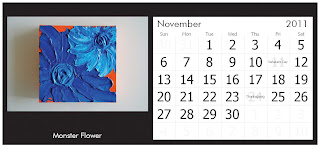Art negotiations, are they appropriate? Well, yes, anything can be negotiated down - even art.However, there is a proper way to do this, and here is how.
Today, art is sold in many different ways: direct from artist, art shows, artist web page, physical galleries, on-line galleries, e-bay, etsy, auctions etc. To negotiate a piece is fine, although it can feel uncomfortable for someone to ask, artists are already used to people haggling prices.
Keep in mind that most artists have some kind of method of pricing their art, and what they price it is a clear reflection of time, materials and investment that they dedicated to the piece. Just because you think artist should get a certain price for something, it doesn't mean the artist will sell it at the price that you think is fair. Usually, artists accumulate a lot of work, and once time has passed and they have a piece for too long, they may be willing to negotiate.
Let's say the painting is priced at $800. And, let's say you can only pay $650. Here are some scenarios that I have experienced and what works the best:
* You buy art outright without negotiation. You swallow the $150 you thought the item is overpriced, but didn't want to offend the artist. This is when you are entering Artist's Hall of Fame Collector status, and that is great. Thank you!
* You tell the artist that the price is more than you can afford at this time. The artist can't do anything about that. Complaining that you can't afford something will not reduce your price. In all reality if you can't afford the tip, you shouldn't go to the restaurant. Same with art: save your money until you can afford it. This negotiation ended badly and you didn't receive any reduction in price.
* You tell the artist that you love their work and would like to eventually own something of theirs. The artist will be thrilled to hear that, and may even ask you what do you like most. You may want to say that you love a specific piece and that you are planning to purchase it. In this situation most artists will offer you a little discount on the spot to help you afford it. Artists motivation, believe it or not is not necessarily to make money. We want to make enough money to keep going. But, primary motivation is to create beauty that is shared with other people. When you love something, you deserve to have it.
* You decide to enter straight negotiations. Since you want to pay $150 less for the piece in question, you start bidding with the artist. So, for a piece that is $800 you ask if the artist would take $500? Well, now that is called low balling. Remember, the artist knows best how much the piece is worth. You will most likely be turned down here because you not only treat art like it is a used car, but you are offending this artist by not respecting their product and their prices. Remember the last article where we talked about artist income.
* You like the piece, look at the tag and you ask the artist what would be a discount on the piece if you purchased it today. Now, this is possibly the best way to negotiate art because now the artist is motivated to move the piece and will offer you a discount. If what they offer is not enough you walk away from the piece. That is a classy way to do it. At this point, don't ask for an even deeper discount. Just walk away. If you received a satisfactory discount, go through with your purchase. Just remember, the piece may not be there the next time.
So, there you have it. Art negotiations in a nutshell. Hope it helps you acquire your valuable art collection. Happy art shopping!












 Once upon a time there was a little farm. If you never visited Iowa, this is how it approximately looks like :) While I don't think Iowa is all that interesting, many people here love these minimalist landscapes. Perhaps if I was a smarter artist, I'd dedicate myself to landscapes instead of my completely crazy abstract body of work. At least I know that I am pretty versatile, but my artistic vision is to create things that are beautiful and interesting.
Once upon a time there was a little farm. If you never visited Iowa, this is how it approximately looks like :) While I don't think Iowa is all that interesting, many people here love these minimalist landscapes. Perhaps if I was a smarter artist, I'd dedicate myself to landscapes instead of my completely crazy abstract body of work. At least I know that I am pretty versatile, but my artistic vision is to create things that are beautiful and interesting.
 Signing up for an October outdoor show in Iowa was risky. However, as unpredictable Iowa weather can be, we had 80 degree weather, and the ArtFest was enjoyable. I have met many great artist and these events, although being very hard work, can create some wonderful friendships.
Signing up for an October outdoor show in Iowa was risky. However, as unpredictable Iowa weather can be, we had 80 degree weather, and the ArtFest was enjoyable. I have met many great artist and these events, although being very hard work, can create some wonderful friendships.